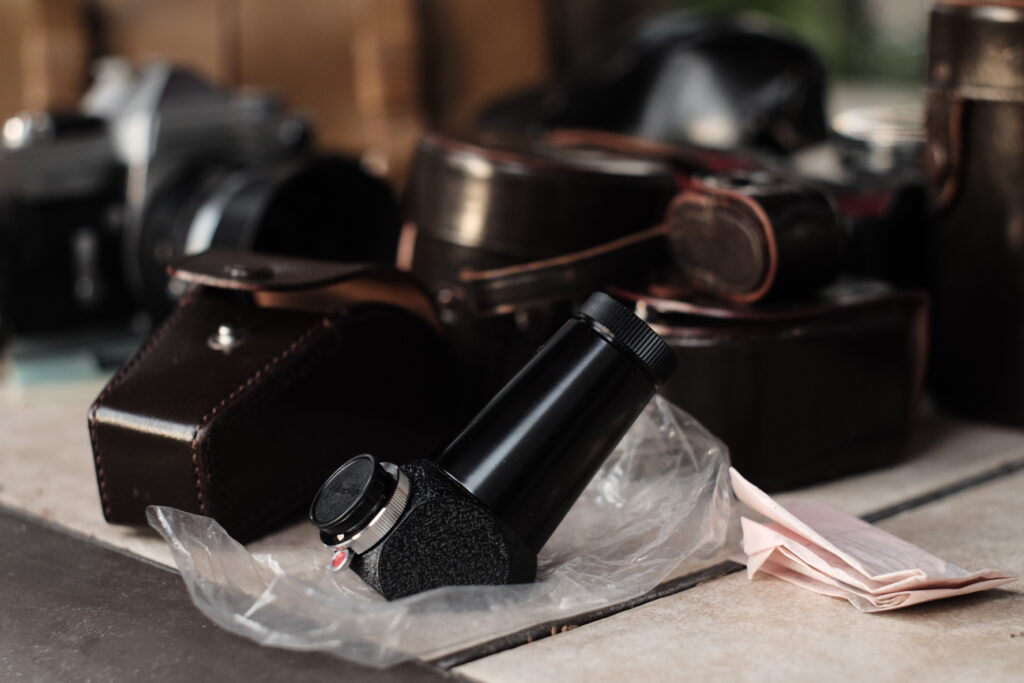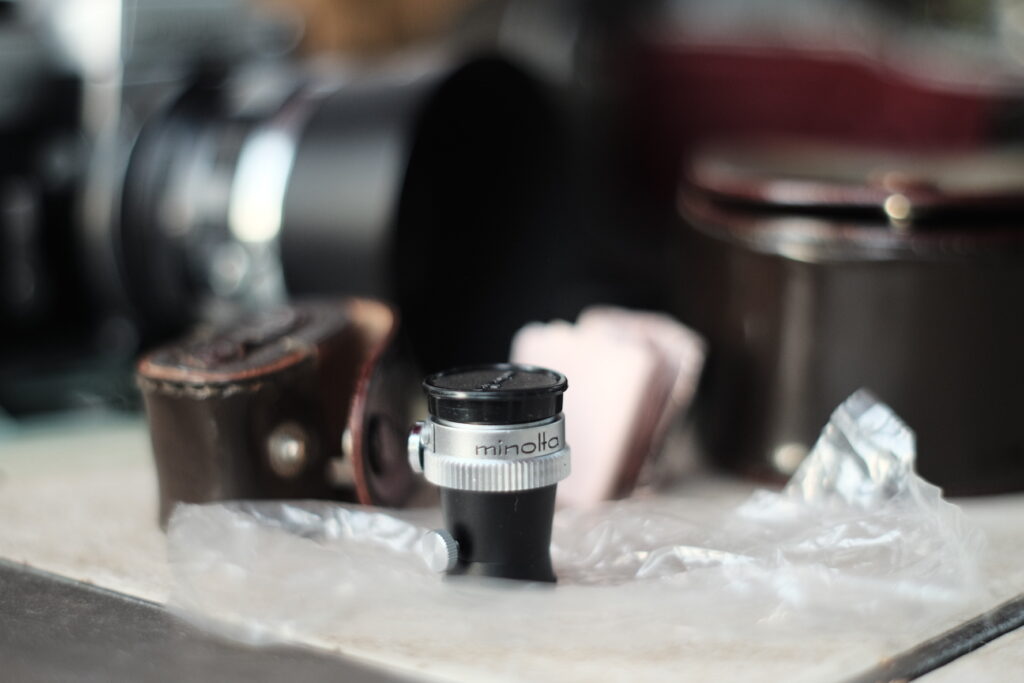My wife, the pups, and I like going to Michigan’s Keweenaw Peninsula several times a year to relax on the beach, visit family, and do light work on our house there. I always have a camera or two or three in tote, and on our most recent trip I brought along a new favorite.
I’ve been particularly interested in the Minolta brand after being gifted an X-700 by my older brother. He bought it from a high school buddy’s father around 1984 and “just loved taking pictures” and “took a lot for the high school yearbook.” This is part of what attracts me to the Minolta brand. The stories they tell are like reading a short novel, complimented by the wonderful photos they take. I’m not sure why, but wether it’s finding one at a garage sale, talking to another photographer or any other time camera’s are come up, it seems to usually include “Oh I loved that old Minolta”. Shortly after getting the X-700 my fascination with the brand and it’s wonderful line of lenses began. Gradually over time I acquired multiple versions of the SRT’s, a couple of XG’s, an XD-11, the XE-7 and of course their wonderful line of auto-focus cameras and lenses. However, there are still gaps that need to be filled, cameras and lenses that still need to be experienced and fully understood. How about an Autocord, or a rangefinder, like a 35 or a 24 rapid? Enter the Minolta SR-7.
I purchased this early production Minolta SR-7 from its original owner, who lived in the Detroit area. The wife, pups, and I live in Madison, Wisconsin, but no problem; my brother, the old Minolta enabler, lives a short distance from the seller and was happy to help. I was particularly interested in this SR-7, which included three lenses with hoods, several Minolta accessories, and other period-correct items. Everything a photographer had available to them in 1962. Finding a complete kit like this adds depth to the story it tells. In this case, accessories like the right-angle and critical magnifier finders are new to me. All of which came with the original leather cases and literature.




Using the SR-7 for the first time took minimal adjustment. I’m accustomed to using SRTs, and the XE-7 is one of my favorite SLRs. I find the full-sized all-metal cameras particularly enjoyable to use. They extend an air of confidence when carried and thoughts like “they don’t make em like the used to” pops into my head. Most of my photo taking is handheld and the weight of the SR-7 helps with absorbing mirror slap. The advance lever on the SR-7 also has a long throw, a subtle reminder of early SLR’s. It’s a mechanical camera so batteries are not required, although the light meter does depend on them. Oddly, I haven’t tested the meter on this camera yet and left metering to a phone app. The light meter display on the SR-7 is on the top cover left of the pentaprism. This leaves the viewfinder with one task, viewfinding.
The early Rokkor-PF AR lenses are also new to me and have a unique charm in their feel and the images they make. I’ve used various versions of Rokkor lens and tend to reach for the all metal MC variants with the “hills and valley’s” focus ring. Similar to the MC lenses, the earlier AUTO ROKKOR lenses are all metal and glass, very fitting for the SR-7.
Our trip to the UP this time included a crawl out to the somewhat remote part of the Keweenaw called High Rock Bay. The dirt road that winds its way from Copper Harbor out to the point is “maintained” by what I assume is a local logging company and requires 4WD to cover the last few miles of the drive and most visitors use side-by-sides or adventure bikes. The timing was late summer/early fall this trip and perfect for poking around the beach, looking for agates or any other stone that looked cool. As the seasons change I can only imagine how much the environment here would love to be photographed.





I’m going to keep this SR-7, the lenses and accessories for a very long time. Will I use it often? Probably not, but I’ll enjoy every minute of it and l look forward to the new stories it captures.
The film was developed using Fujicolor 400-speed film, processed at home with a Cinestill C-41 kit, and scanned with Plustek 8100.
You can find me on instagram
Share this post:









Comments
Jukka Reimola on 5 Frames rock hunting in the Keweenaw with a Minolta SR-7
Comment posted: 26/11/2024
Comment posted: 26/11/2024
Bob Janes on 5 Frames rock hunting in the Keweenaw with a Minolta SR-7
Comment posted: 26/11/2024
The two letter code (the 'PF' in Rokkor-PF), is supposed to indicate the number of elements and groups. According the the (excellent) 'Rokkor files' https://www.rokkorfiles.com/Lens%20History.html
The first letter shows the number of groups (T=3; Q=4; P=5; H=6; S=7; O=8; N=9) while the second shows the number of elements (C=3; D=4; E=5; F=6; G=7; H=8; I=9; J=10; K=11; L=12)
So the 135mm f/2.8 Rokkor-PF has 6 elements in 5 groups).
Comment posted: 26/11/2024
Comment posted: 26/11/2024
Bill Brown on 5 Frames rock hunting in the Keweenaw with a Minolta SR-7
Comment posted: 26/11/2024
Comment posted: 26/11/2024
Tim Gasper on 5 Frames rock hunting in the Keweenaw with a Minolta SR-7
Comment posted: 28/11/2024
TJR
Comment posted: 28/11/2024
Paul Quellin on 5 Frames rock hunting in the Keweenaw with a Minolta SR-7
Comment posted: 29/11/2024
Comment posted: 29/11/2024
Daniel Castelli on 5 Frames rock hunting in the Keweenaw with a Minolta SR-7
Comment posted: 04/12/2024
I use a Leitz-Minolta CL, a Leica CL and the superb M-Rokkor 40mm f/2.0. I’ve been looking off & on for a Minolta CLE for a few years. It had to be in GWO, it had to come w/a guarantee. One appeared on the ‘bay a couple of weeks ago and I bought it. It works fine. I’m always impressed with the high quality of the Minolta products. Except for the higher cost of a used CLE, they are reasonably priced and lenses are first rate. The M-Rokkor is as good as my v2 35mm Summicron.
Comment posted: 04/12/2024